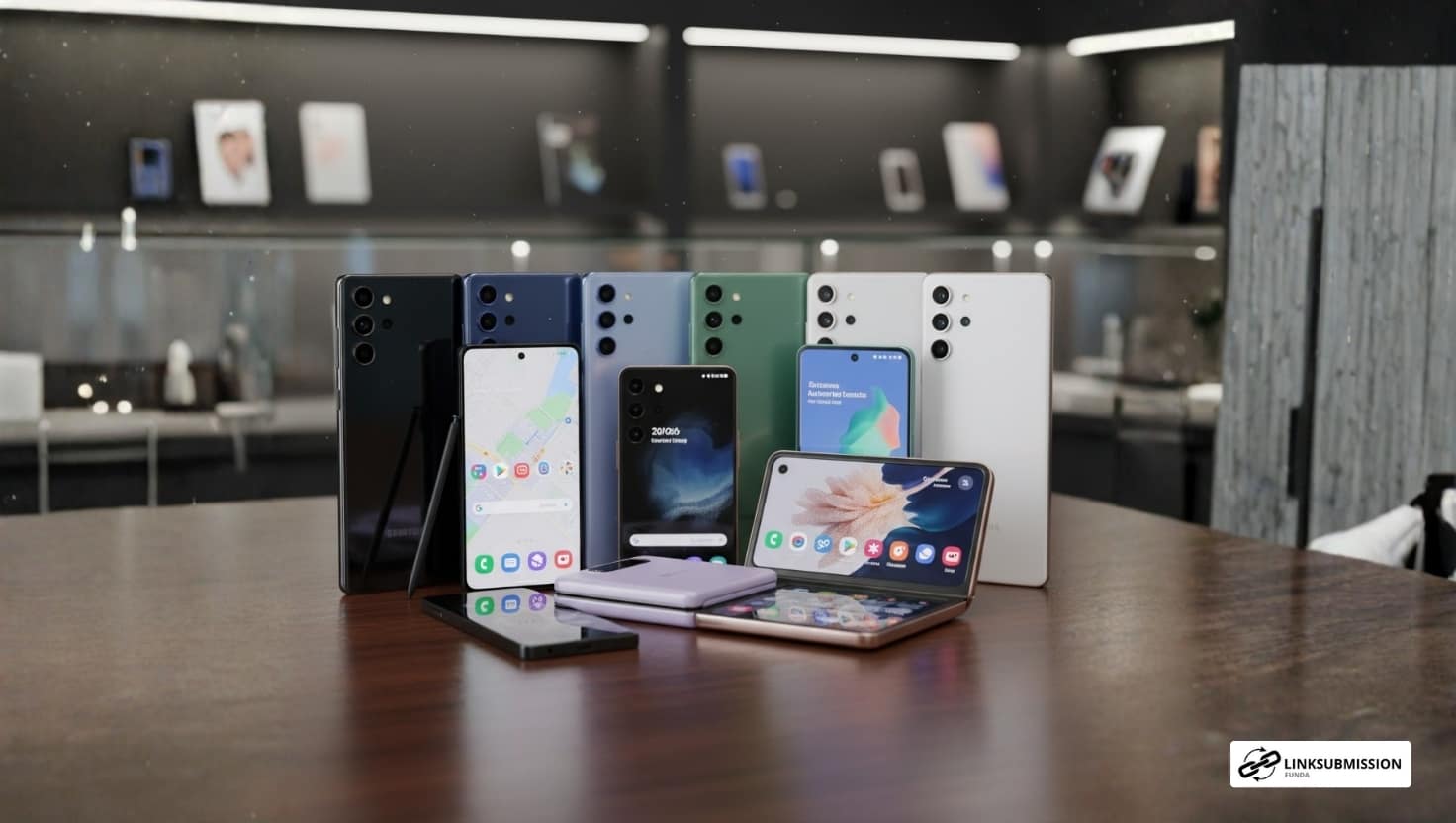The Indian smartphone market is undergoing dramatic shifts, and for Samsung the slide from a solid second-place contender to effectively third is a wake-up call. Recent data from International Data Corporation (IDC) show that Samsung’s share in India dropped to 12.6 % in the third quarter of 2025—putting it third in shipment-volume ranking, behind Vivo (18.3 %) and Oppo (13.9 %).
Here’s a look at how this happened, what it means, and where Samsung needs to go from here.
The slip in numbers
Earlier, Samsung had maintained a comfortable second-spot or even first in some quarters in India. For instance, in Q1 2024, Samsung reportedly held a 19 % share, topping the chart.
But the tide turned quickly. By 2024 full-year data showed Samsung’s share had shrunk to 13.2 %—down from 17.0 % the previous year—while Vivo surged ahead to 16.6 %.
According to IDC’s Q3 2025 numbers:
- Vivo: 18.3 %
- Oppo: 13.9 %
- Samsung: 12.6 %
That means Samsung has not only lost the No. 2 spot—it’s at risk of falling further behind if the trend continues.
Why did Samsung slip?
Several factors have combined to work against Samsung in India:
- Aggressive competition from Chinese players
Brands like Vivo and Oppo have expanded fast, particularly in offline channels and in underserved price-segments. Their strategy of offering strong spec phones at aggressive pricing has resonated with India’s value-driven consumer base. - Segment and pricing mix disadvantages
While Samsung is strong in the premium and mid-premium segments, much of the Indian market still strongly values the lower- and mid-price tiers. Samsung’s focus on higher ASP (average selling price) means it may have been less competitive in the value segment. For instance, in Q2 2025 Samsung had 23 % value-share but was still second in shipment volume. - Market headwinds
The Indian smartphone market grew only modestly in 2024 (~4 %), and the growth was uneven. Samsung experienced a ~19 % drop in shipments in India in 2024.
Meanwhile, Chinese brands and others were more nimble in capturing growth opportunities. - Channel dynamics & local competition
Offline retail remains key in India. Brands that strengthen ties with regional retail, offer strong trade-in/deal programs, or cover cascading budgets often outflank more “premium-focused” players. Samsung’s traditional strengths—premium branding, flagship innovation—may be less effective when the bulk of volume is being driven by value and mid-tier devices.
So what does this mean for Samsung?
- Prestige doesn’t equal volume dominance: Being strong in premium segments is positive, but India remains a mass-market play. Volume leadership often drives long-term ecosystem strength and bargaining power with carriers and retailers.
- Need to recalibrate portfolio: Samsung might need to push more aggressively in the value and mid-price segments, balancing between premium brand image and mass-market relevance. Successful launches of more affordable models can help arrest the slide.
- Channel & geographic coverage: Tier 2/3 towns and offline retail channels remain crucial. Brands that penetrate deeply into such markets often gain sustainable share. Samsung must ensure its distribution, service, and brand appeals in these segments.
- Innovation vs affordability balance: Samsung leads in foldables and premium innovations, but those alone won’t drive volume dominance in India. The brand must ensure its innovations trickle down in cost-effective ways that appeal locally.
- Brand perception & localised offers: Indian consumers value value-for-money and upgrade economics. Trade-ins, bundled services, localised marketing, and ecosystem tie-ups (financing, exchanges) all help. Samsung appears to have been stronger on some fronts, but the competition is catching up fast.
The wider market implications
- For the Indian smartphone ecosystem, this shift underscores how fast the competitive landscape is moving. A brand that was comfortably second may not retain that position without constant adaptation.
- For consumers, it signals that more choice and competitive pressure remain alive—particularly among mid-price and volume segments.
- For Samsung’s rivals—especially Chinese brands—it’s a validation of their strategy of aggressive pricing + rapid refreshes + offline-channel strength.
- For Samsung, this may be a call to revisit assumptions about India: while premium innovations matter, broad-based volume remains the backbone.
The path ahead for Samsung
- Ramp up affordable and mid-price launches: Ensuring the A-series, M-series or equivalents have compelling specs for budget conscious buyers.
- Leverage local manufacturing: India has emphasised localisation (via “Make in India” and incentives). Samsung already has a significant manufacturing footprint here; further moves could help cost competitiveness.
- Strengthen services/ecosystem tie-ups: Value in the smartphone business increasingly comes from services, financing, trade-in, warranties. Samsung must deepen its engagement beyond just hardware.
- Maintain flagship/innovation leadership: Even as it expands downward, Samsung must retain its edge in premium segments to protect margins, brand strength, and long-term positioning.
- Aggressive channel outreach: Strengthening relationships with offline retailers in smaller cities and remote markets, ensuring stock availability, promotions, marketing resonance.
- Timing & market sensitivity: Recognising the upgrade cycles in India (e.g., 2-3 years rather than annual for many buyers), aligning launches and offers accordingly.
Final thoughts
Samsung’s fall from the No. 2 slot in India’s smartphone shipments is a cautionary tale about how dynamic the Indian market can be. It’s not simply about being globally strong—it’s about being locally responsive. Losing ground to players like Vivo and Oppo now threatens Samsung’s volume base, which in turn could erode its manufacturing scale, financing leverage, channel trust and long-term growth in one of the world’s largest markets.
If Samsung acts decisively—balancing its premium DNA with mass-market reach—it can still reclaim stronger footing. But if it continues to treat India as a secondary battleground, the gap may widen further. The next 12-18 months will be critical.





